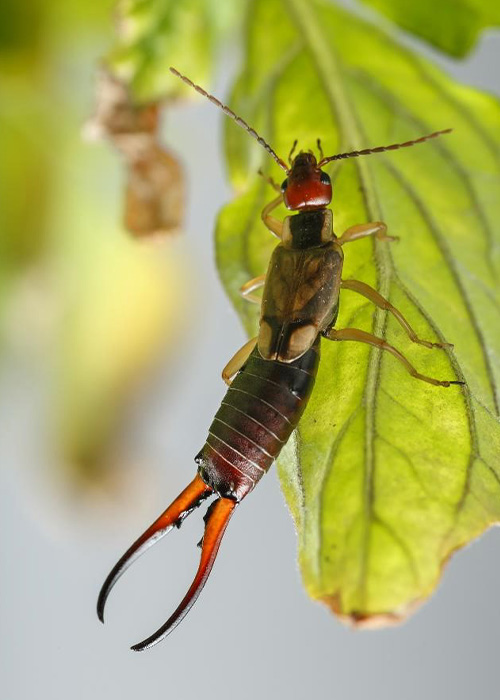EARWIG CONTROL SERVICES IN JACKSON MS

Earwigs make up the insect order Dermaptera and are found throughout the Americas, Africa, Eurasia, Australia, and New Zealand. With about 2,000 species in 12 families, they are one of the smaller insect orders. Earwigs have characteristic cerci, a pair of forceps pincers on their abdomen, and membranous wings folded underneath short forewings, hence the scientific order name, “skin wings.” Some groups are tiny parasites on mammals and lack the typical pincers. Earwigs rarely use their flying ability.
Earwigs are mostly nocturnal and often hide in small, moist crevices during the day, and are active at night, feeding on a wide variety of insects and plants. Damage to foliage, flowers and various crops is commonly blamed on earwigs, especially the common earwig Forficula auricularia.
Earwigs have five molts in the year before they become adults. Many earwig species display maternal care, which is uncommon among insects. Female earwigs may care for their eggs, and even after they have hatched as nymphs will continue to watch over offspring until their second molt. As the nymphs molt, sexual dimorphism such as differences in pincer shapes begins to show.
Some earwig specimen fossils are in the extinct suborders Archidermaptera or Eodermaptera, the former dating to the Late Triassic and the latter to the Middle Jurassic. Many orders of insect have been theorized to be closely related to earwigs, though the icebugs of Grylloblattaria are most likely.
Earwigs are sometimes known as pincher bugs because of the forceps-like pinchers, call cerci, which they carry at the rear of their bodies. Only a few of the 2000 species live here in Mississippi, given our climate and the fact that earwigs tend to prefer dark, damp environments. This is why they are usually found in interior and exterior expansion joints, near water fixtures, grass, other watered landscaping, and under rocks.
Contrary to a popular myth that has been around since the Middle Ages, earwigs do not crawl into people's ears and burrow into their brains to lay eggs. They can cause minor but irritating skin injuries with their pinchers. A nest of earwigs can also give off an unpleasant odor. Some gardeners have found them to be beneficial because they eat other insects that can harm plants, but if their prey is not abundant, they will become scavengers and start looking for food wherever they can. As they forage for food and as their populations are left uncontrolled we start finding them in our homes and they become a pest.
see also: Credible Termite Control Services
CHOOSE OUR EXPERT EARWIG CONTROL SERVICE
Magnolia Exterminating can effectively treat earwigs and other common pests in a way that is people friendly, pet friendly, and environment friendly. Contact us now for more details!


